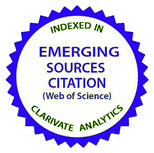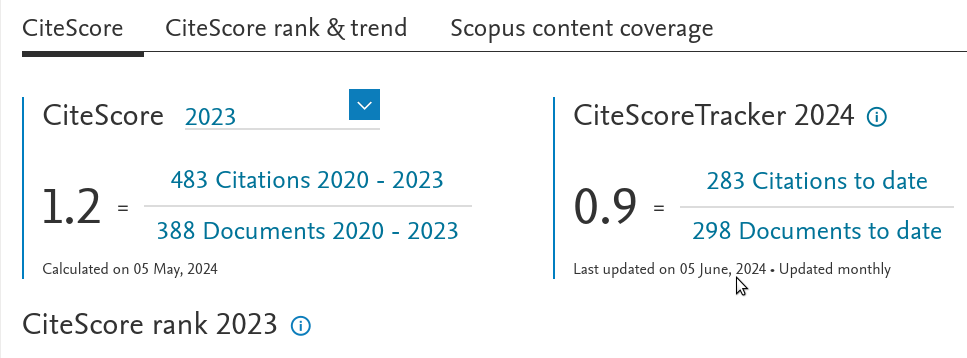Влияние длительности спекания на микроструктуру и электрические свойства низковольтной варисторной керамики на основе оксида цинка
DOI:
https://doi.org/10.15407/ujpe59.08.0787Ключові слова:
керамика, варистор, полупроводник, вольт-амперная характеристика, диэлектрическая проницаемостьАнотація
Приведены результаты экспериментальных исследований варисторной керамики на основе оксида цинка. Изучено влияние длительности спекания керамики на ее электрические свойства и микроструктуру. Установлено, что увеличение времени спекания керамики приводит к расширению спектра распределения зерен по размерам и сдвигу максимума в область больших значений. Выявлены специфические особенности распределения зерен по размерам. При больших временах спекания происходит образование каналов проводимости по крупным зернам без разрушения барьерной структуры варисторной керамики, что приводит к увеличению действительной и мнимой составляющих комплексной диэлектрической проницаемости.
Посилання
V.B. Kvaskov, Semiconductor Devices with Bipolar Conductivity (Energoatomizdat, Moscow, 1988) (in Russian).
W. Heywang, Amorphe und Polykristalline Halbleiter (Springer, Berlin, 1984).
https://doi.org/10.1007/978-3-642-95447-4
V.P. Cherepanov, A.K. Khrulev, and I.P. Bludov, Electronic Devices to Protect Electronic Facilities against Electric Overloads: A Handbook (Radio i Svyaz Moscow, 1994) (in Russian).
S.-T. Kuo and W.-H. Tuan, J. Eur. Ceram. Soc. 30, 525 (2010).
https://doi.org/10.1016/j.jeurceramsoc.2009.05.008
W.S. Lee, W.T. Chen, T. Yang, Y.C. Lee, S.P. Lin, C.Y. Su, and C.L. Hu, J. Eur. Ceram. Soc. 26, 3753 (2006).
https://doi.org/10.1016/j.jeurceramsoc.2005.12.027
W.S. Lee, W.T. Chen, Y.C. Lee, T. Yang, C.Y. Su, and C. L. Hu, Ceram. Intern. 33, 1001 (2007).
https://doi.org/10.1016/j.ceramint.2006.02.017
L. Wang, G. Tang, and Z.-K. Xu, Ceram. Intern. 35, 487 (2009).
https://doi.org/10.1016/j.ceramint.2008.01.011
M. Schloffer, C. Teichert, P. Supancic, A. Andreev, Y. Hou, and Z. Wang, J. Eur. Ceram. Soc. 30, 1761 (2010).
https://doi.org/10.1016/j.jeurceramsoc.2010.01.005
S. Li, F. Xie, F. Liu, J. Li, and M.A. Ali, Mater. Lett. 59, 302 (2005).
https://doi.org/10.1016/j.matlet.2004.10.008
H.O. Toplan and Y. Karakas, Ceram. Intern. 27, 761 (2001).
https://doi.org/10.1016/S0272-8842(01)00027-X
M.-H. Wang, K.-A. Hu, B.-Y. Zhao, and N.-F. Zhang, Mater. Chem. Phys. 100, 142 (2006).
https://doi.org/10.1016/j.matchemphys.2005.12.023
Q. Wang, Y. Qin, G.J. Xu, L. Chen, Y. Li, L. Duan, Z.X. Li, Y.L. Li, and P. Cui, Ceram. Intern. 34, 1697 (2008).
https://doi.org/10.1016/j.ceramint.2007.05.012
M.-h. Wang, Q.-h. Tang, and C. Yao, Ceram. Intern. 36, 1095 (2010).
https://doi.org/10.1016/j.ceramint.2009.12.006
C. Tsonos, A. Kanapitsas, D. Triantis, C. Anastasiadis, I. Stavrakas, P. Pissis, and E. Neagu, Ceram. Intern. 37, 207 (2011).
https://doi.org/10.1016/j.ceramint.2010.08.036
Y.Q. Huang, L. Meidong, Z. Yike, L. Churong X. Donglin, and L. Shaobo, Mater. Sci. Eng. B 86, 232, (2001).
https://doi.org/10.1016/S0921-5107(01)00688-2
M.-h. Wang, C. Yao, and N.-f. Zhang, J. Mater. Process. Techn. 202, 406 (2008).
https://doi.org/10.1016/j.jmatprotec.2007.09.033
N. Daneu, N.N. Gramc, A. Recnik, M.M. Krzmanc, and S. Bernik, J. Eur. Ceram. Soc. 33, 335 (2013).
https://doi.org/10.1016/j.jeurceramsoc.2012.08.023
V.B. Kvaskov and M.A. Chernysheva, Electrophysical Properties and Application of Metal Oxide Varistors (Informelektro, Moscow, 1985) (in Russian).
C.-W. Nahm, Ceram. Intern. 35, 2679 (2009).
https://doi.org/10.1016/j.ceramint.2009.03.011
C.-W. Nahm, Mater. Sci. Eng. B 133, 91 (2006).
https://doi.org/10.1016/j.mseb.2006.06.001
D. Xu, L. Shi, Z. Wu, Q. Zhong, and X. Wu, J. Eur. Ceram. Soc. 29, 1789 (2009).
https://doi.org/10.1016/j.jeurceramsoc.2008.10.020
D. Fernandez-Hevia, M. Peiteado, J. de Frutos, A.C. Caballero, and J.F. Fernandez, J. Eur. Ceram. Soc. 24, 1205 (2004).
https://doi.org/10.1016/S0955-2219(03)00411-4
Yu.M. Tairov and V.F. Tsvetkov, Technology of Semiconductor and Dielectric Materials (Lan', Moscow, 2002) (in Russian).
A.L. Khalaf Abdullah, M.D. Termanini, F. Alhaj Omar, Energy Procedia 19, 128 (2012).
https://doi.org/10.1016/j.egypro.2012.05.193
T.K. Gupta, J. Am. Ceram. Soc. 73, 1817 (1990).
https://doi.org/10.1111/j.1151-2916.1990.tb05232.x
Ya.E. Geguzin, Physics of Sintering (Nauka, Moscow, 1984) (in Russian).
Physico-Chemical Properties of Oxides: A Handbook, edited by G.V. Samsonova (Metallurgiya, Moscow, 1978) (in Russian).
K. Okazaki, Ceramic Engineering for Dielectrics (Gakkensha, Tokyo, 1983).
R. Einzinger, Annu. Rev. Mater. Sci. 17, 299 (1987).
https://doi.org/10.1146/annurev.ms.17.080187.001503
C.-W. Nahm, Mater. Sci. in Semicond. Process. 16, 778 (2013).
https://doi.org/10.1016/j.mssp.2012.12.026
D. Xu, X. Cheng, H. Yuan, J. Yang, and Y. Lin, J. Alloys Comp. 509, 9312 (2011).
A.S. Tonkoshkur, Ukr. Fiz. Zh. 23, 2030 (1978).
Kh.S. Valeev and V.B Kvaskov, Nonlinear Metal-Oxide Semiconductors (Energoizdat, Moscow, 1983) (in Russian).
G.I. Epifanov and Yu.A. Moma, Solid State Electronics (Vysshaya Shkola, Moscow, 1986) (in Russian).
I.V. Gomilko and A.S. Tonkoshkur, Visn. Dnipropetrovsk. Univ. Ser. Fiz. Radioelektron. 3, N 2, 15 (1998).
I.A. Myasnikov, V.Ya. Sukharev, L.Yu. Kupriyanov, and S.A. Zav'yalov, Semiconductor Sensors in PhysicoChemical Researches (Nauka, Moscow, 1991) (in Russian).
Downloads
Опубліковано
Як цитувати
Номер
Розділ
Ліцензія
Ліцензійний Договір
на використання Твору
м. Київ, Україна
Відповідальний автор та співавтори (надалі іменовані як Автор(и)) статті, яку він (вони) подають до Українського фізичного журналу, (надалі іменована як Твір) з одного боку та Інститут теоретичної фізики імені М.М. Боголюбова НАН України в особі директора (надалі – Видавець) з іншого боку уклали даний Договір про таке:
1. Предмет договору.
Автор(и) надає(ють) Видавцю безоплатно невиключні права на використання Твору (наукового, технічного або іншого характеру) на умовах, визначених цим Договором.
2. Способи використання Твору.
2.1. Автор(и) надає(ють) Видавцю право на використання Твору таким чином:
2.1.1. Використовувати Твір шляхом його видання в Українському фізичному журналі (далі – Видання) мовою оригіналу та в перекладі на англійську (погоджений Автором(ами) і Видавцем примірник Твору, прийнятого до друку, є невід’ємною частиною Ліцензійного договору).
2.1.2. Переробляти, адаптувати або іншим чином змінювати Твір за погодженням з Автором(ами).
2.1.3. Перекладати Твір у випадку, коли Твір викладений іншою мовою, ніж мова, якою передбачена публікація у Виданні.
2.2. Якщо Автор(и) виявить(лять) бажання використовувати Твір в інший спосіб, як то публікувати перекладену версію Твору (окрім випадку, зазначеного в п. 2.1.3 цього Договору); розміщувати повністю або частково в мережі Інтернет; публікувати Твір в інших, у тому числі іноземних, виданнях; включати Твір як складову частину інших збірників, антологій, енциклопедій тощо, то Автор(и) мають отримати на це письмовий дозвіл від Видавця.
3. Територія використання.
Автор(и) надає(ють) Видавцю право на використання Твору способами, зазначеними у п.п. 2.1.1–2.1.3 цього Договору, на території України, а також право на розповсюдження Твору як невід’ємної складової частини Видання на території України та інших країн шляхом передплати, продажу та безоплатної передачі третій стороні.
4. Строк, на який надаються права.
4.1. Договір є чинним з дати підписання та діє протягом усього часу функціонування Видання.
5. Застереження.
5.1. Автор(и) заявляє(ють), що:
– він/вона є автором (співавтором) Твору;
– авторські права на даний Твір не передані іншій стороні;
– даний Твір не був раніше опублікований і не буде опублікований у будь-якому іншому виданні до публікації його Видавцем (див. також п. 2.2);
– Автор(и) не порушив(ли) права інтелектуальної власності інших осіб. Якщо у Творі наведені матеріали інших осіб за виключенням випадків цитування в обсязі, виправданому науковим, інформаційним або критичним характером Твору, використання таких матеріалів здійснене Автором(ами) з дотриманням норм міжнародного законодавства і законодавства України.
6. Реквізити і підписи сторін.
Видавець: Інститут теоретичної фізики імені М.М. Боголюбова НАН України.
Адреса: м. Київ, вул. Метрологічна 14-б.
Автор: Електронний підпис від імені та за погодження всіх співавторів.

















